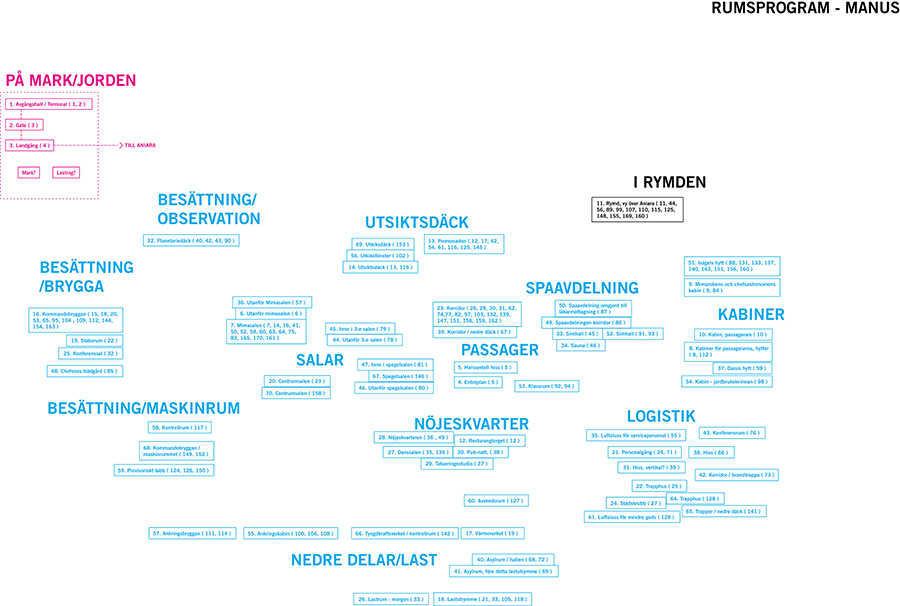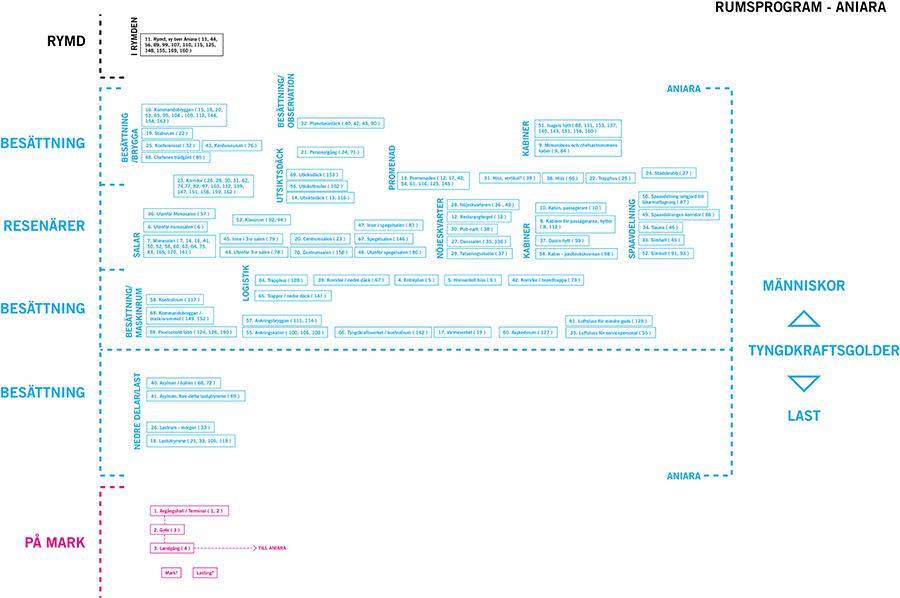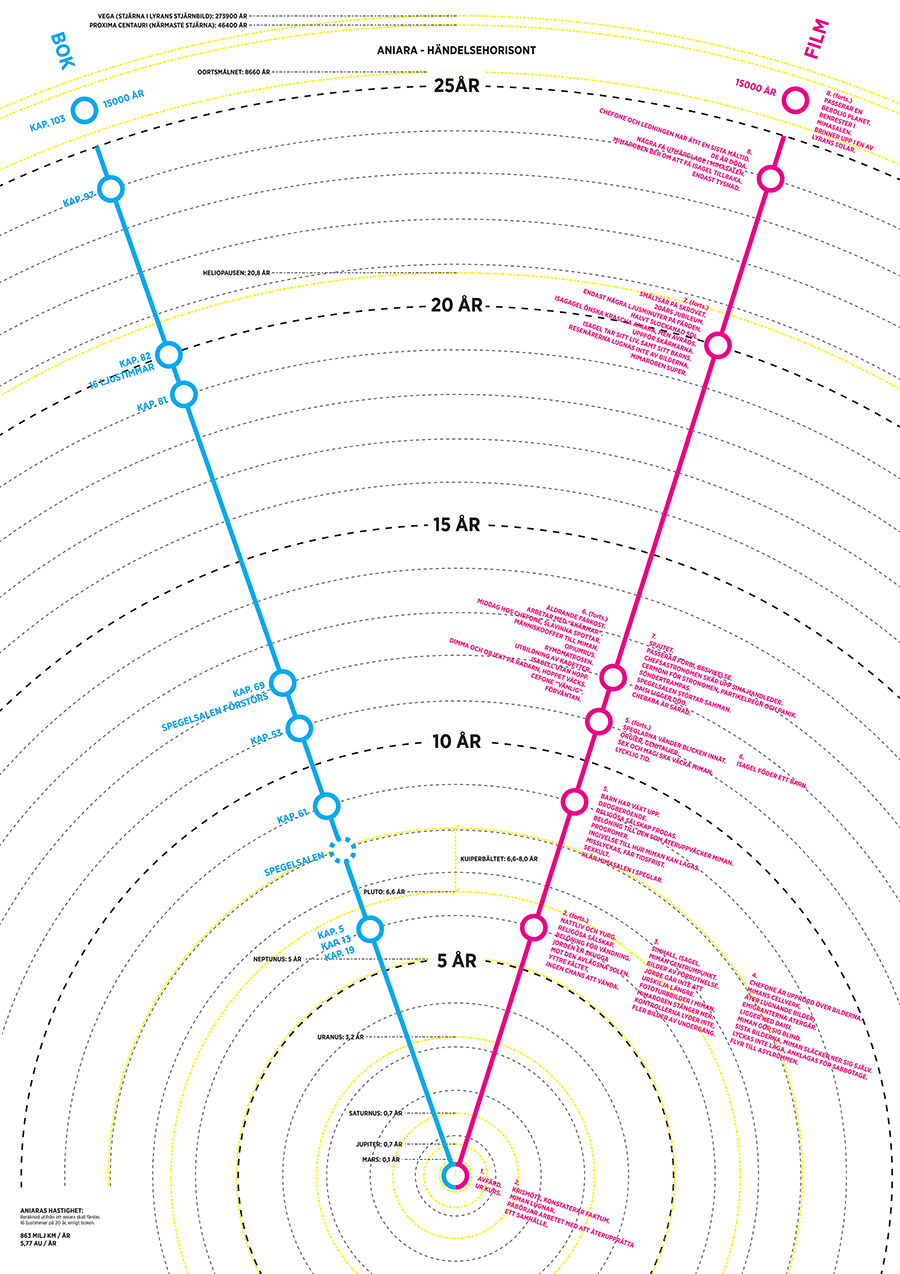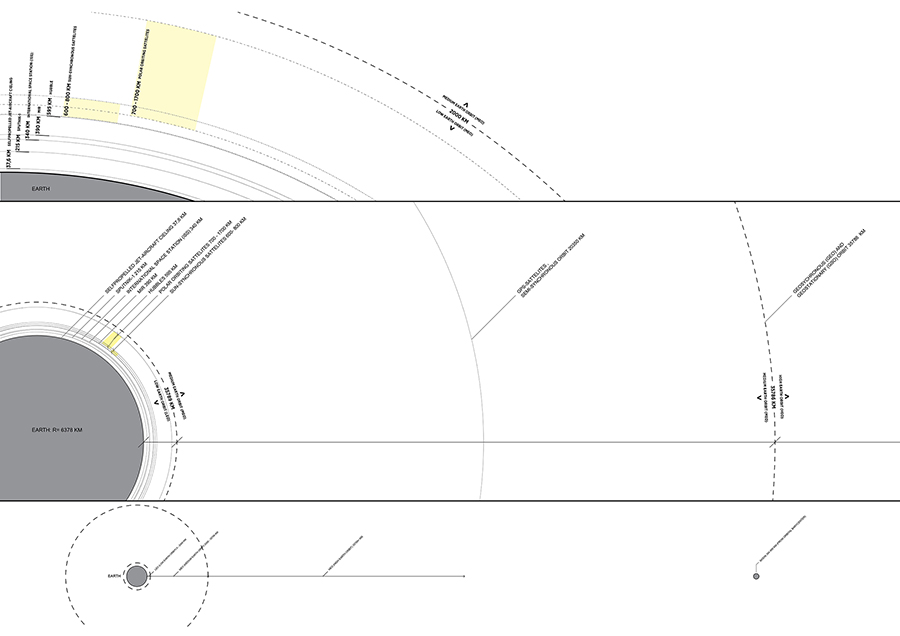ANIARA
CONCEPT DESIGN AND RESEARCH
FOR THE MOTION PICTURE 'ANIARA'
2014-2018
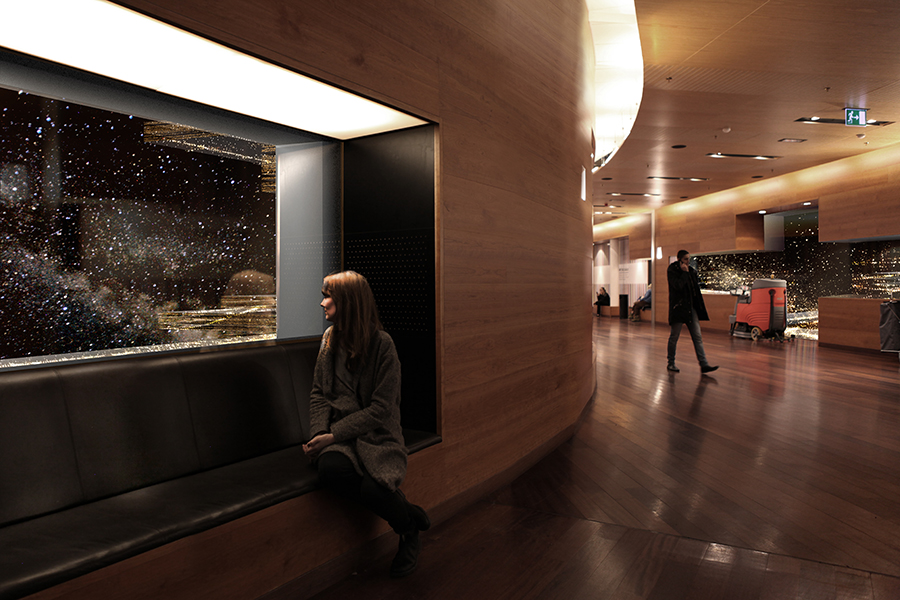
CONCEPT DESIGN
The concept design for the feature-length film Aniara (2018) was undertaken by architects Rutger Sjögrim (of Secretary), Andreas Nordström, and Elsa Kristina Sundin, and chemist Fredrik Andersson. As concept designers we worked in close collaboration with the film’s writers and directors, Pella Kågeman and Hugo Lilja, during the early stages of their project, as the story matured from treatment to screenplay (2014-2016). Our work has been to conceptualize and visualize the environments, the ship and the world that the story of Aniara inhabits.
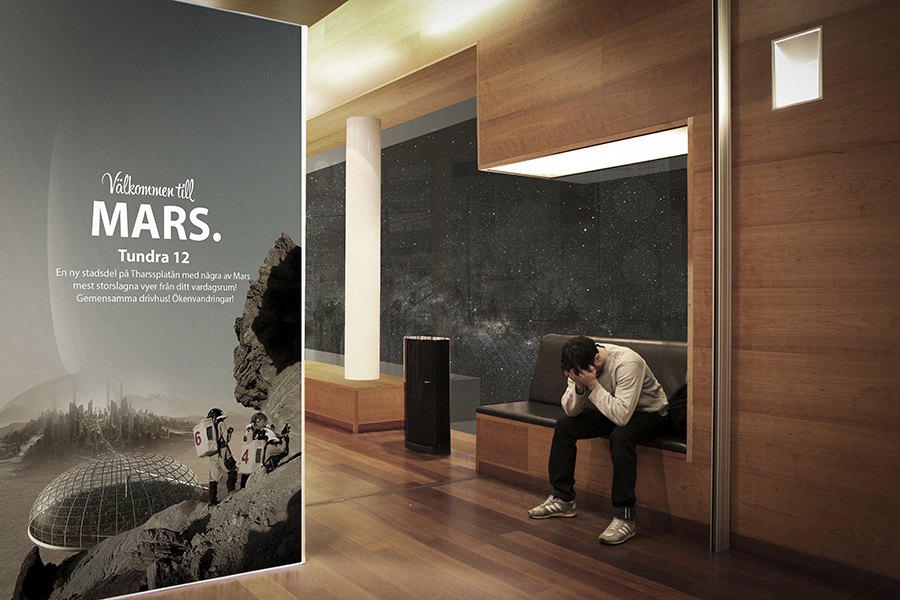
CANON
Aniara is a poem that was written in verse, over 103 cantos, by the Swedish Noble Prize laureate Harry Martinsson. It was written during the mid-1950s – in the midst of the Cold War, and not long after the detonation of the first hydrogen bomb. The story follows the crew and passengers of a spaceship that has been thrown off course. With no way of turning back, it drifts endlessly into the empty void of the galaxy beyond our solar system. The lives of the people on board, their fates and thoughts, form a meditation on the failings and shortcomings of mankind – both our violence and, in the end, our insignificance. It’s a bleak story. It is also considered one of the canonical works of Swedish 20th-century literature and Martinsson’s magnum opus, which won him the Nobel Prize in literature in 1974.
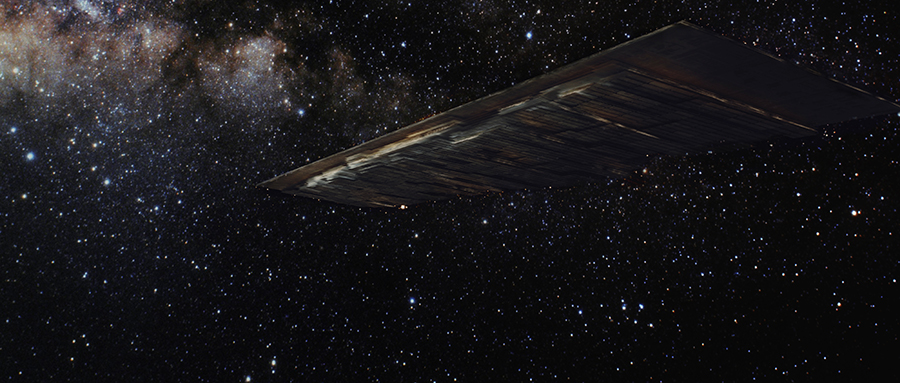
NO-SET SCI-FI
Turning a poem like Aniara into a film is basically impossible. So much of what makes it special is embedded in the language, the rhythm, and the atmosphere – in the fantastic, quasi-scientific neologisms and mysticism – so that any adaptation will inevitably leave a film feeling flatter than the original. Aniara is also a text that is dear to many, for different reasons, and the changes inherent in re-presenting the story were always sure to put off as many as they would please.
It seemed like a smart move then, when Pella and Hugo told us that they wanted to make Aniara into a film, but with a low budget and shot on-location, and that they wanted to make a film that felt ordinary – mundane, even. That it would have a very different aesthetic than the poem but be true to its spirit. From the very beginning, Pella and Hugo had a vision of Aniara as a kind of cruise ship, like the ones that cross the Baltic sea between Sweden and Finland. These large ships ferry people, up to about 3,000 per ship, in a drunken haze fueled by tax-free shopping, self-service wine on tap, and all-you-can-eat buffet meals, combined with themed bars and kitsch night clubs. Relentlessly these ships have been crossing the Baltic for half a century, and much like the spaceships in Aniara that ferry people from Earth to Mars, they are places where the extraordinary and the very mundane collapse into each other. Places where the dream of that one fabulous night is repeated over and over again until everything is bleached into a grey, flavorless eternity.
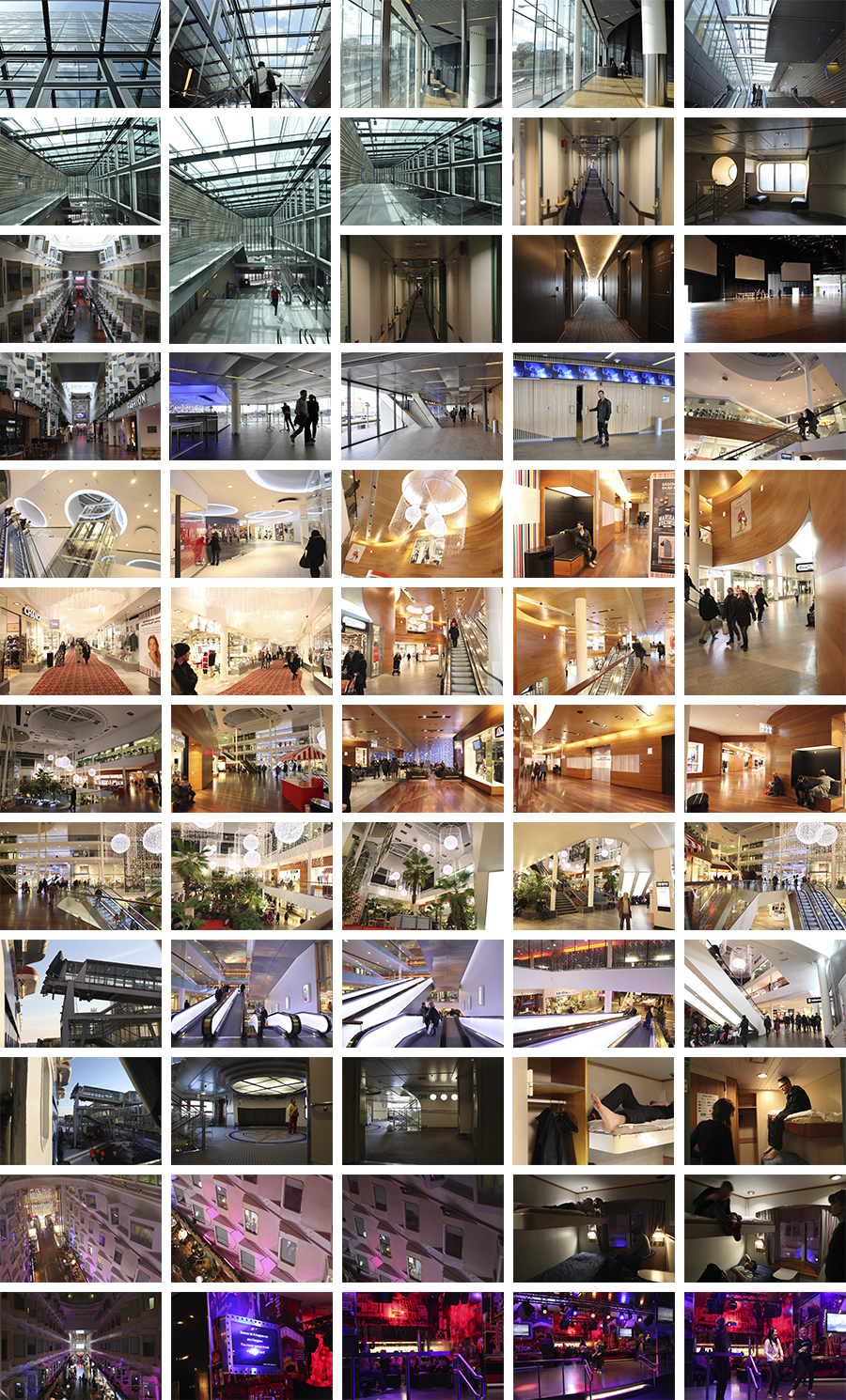
Early location scouting. An endless interior of shopping malls, conference centres and cruise ships.
INFINITE VENEER
In order to find a logic for the design of the ship, we started to work with Aniara as an endless interior of cruise ships spliced into shopping malls spliced into conference centres and then into cheap night clubs, infinite veneer and soft carpets, and then to think about what kind of spaceship would believably house such an interior: How would it be organized, how would it look and how would we deal with things that, in the poem, are magical (artificial gravity, mystic propulsion and strange fields)? If we made Aniara too realistic, with rotating segments for artificial gravity, tubular and cramped interiors, and vast arrays of solar panels, the mysticism would be lost, but also the galleria and that flat realness of everyday life. If we followed the poem too closely, with its descriptions of vast halls and spheres, the everyday would be gone as well and we would risk turning an epic text into cheesy images.
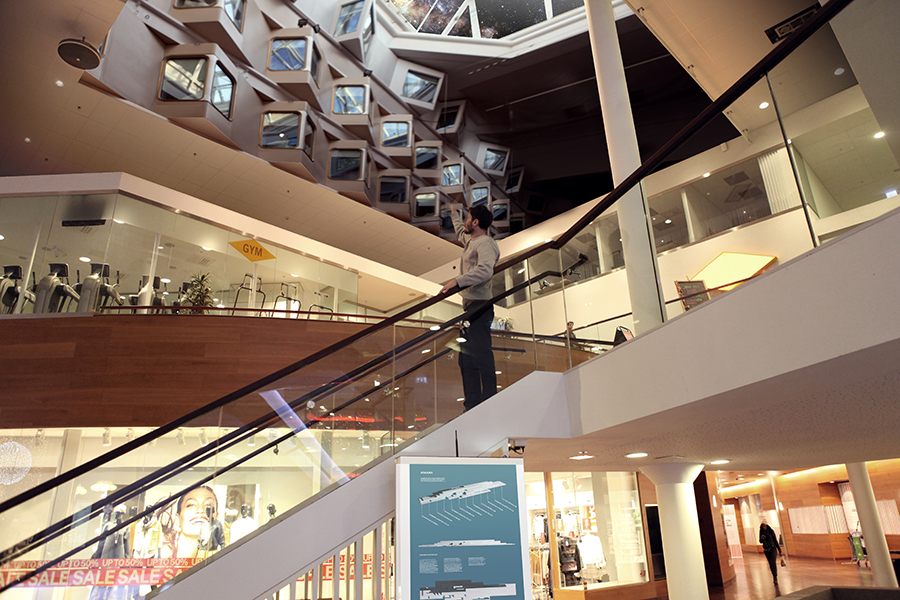
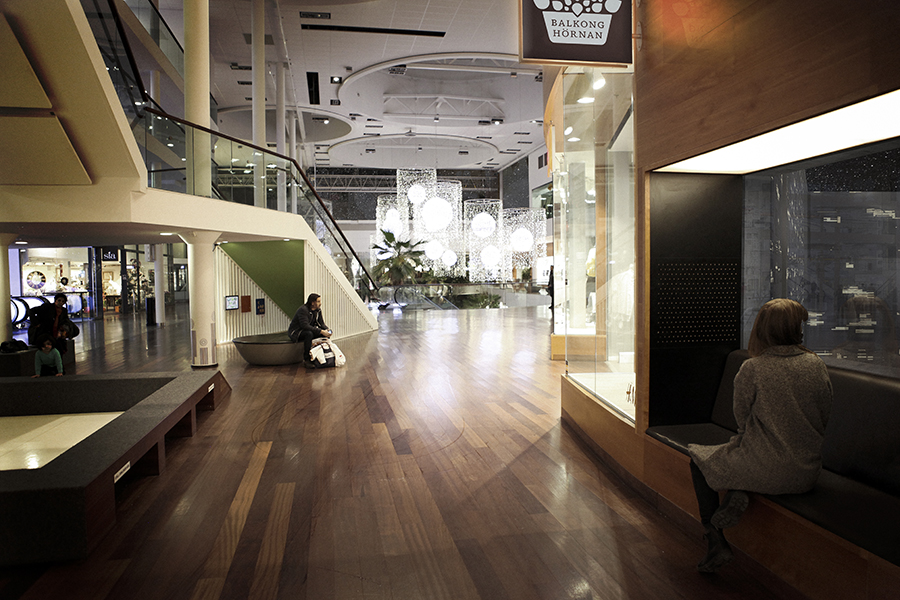
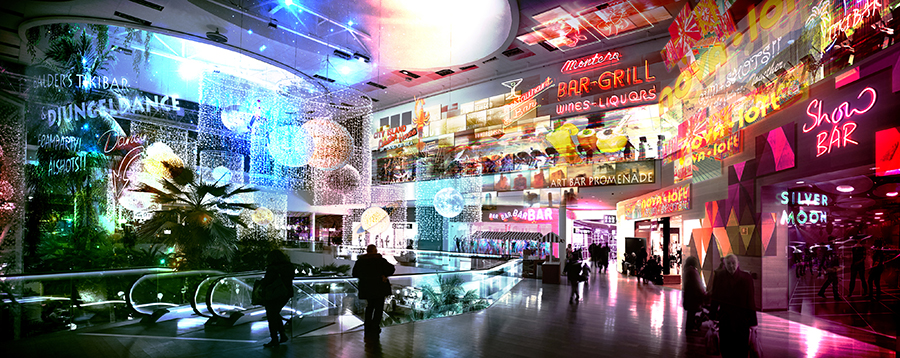
SPLIT HORIZON
Thinking of Aniara as a piece of city, rather than a ship, floating through space, seemed a good fit for the endless interior of nondescript contemporary consumption. It also allowed for different environments to be convincingly spliced into each other and rearranged as needed, even as late as on the cutting board, without breaking the overall logic. This city was then placed on top of a rectangular plate. A plate that inexplicably generates gravity, as well as the fields that are used for propulsion. The rectangular shape provides a form that is simple and iconic enough to allow for everything within it to be a mess, and as a humble nod to other space “monoliths” it seemed at home amongst the spheres and voids that define the architectures of space. The other side of the plate carries all the cargo, hangars and storage facilities. Like an upside-down container port spread out along the underside. This way, all the fantastical and magical things would be contained in the plate, but the two cities, one for people and one for things, would work almost like the ones we are used to. Between them, the plate would form a mirrored ground, a split horizon.
All the scenes from an early version of the script arranged in spatial sequences.
The scenes and spaces arranged in relation to a gravitational horizon.
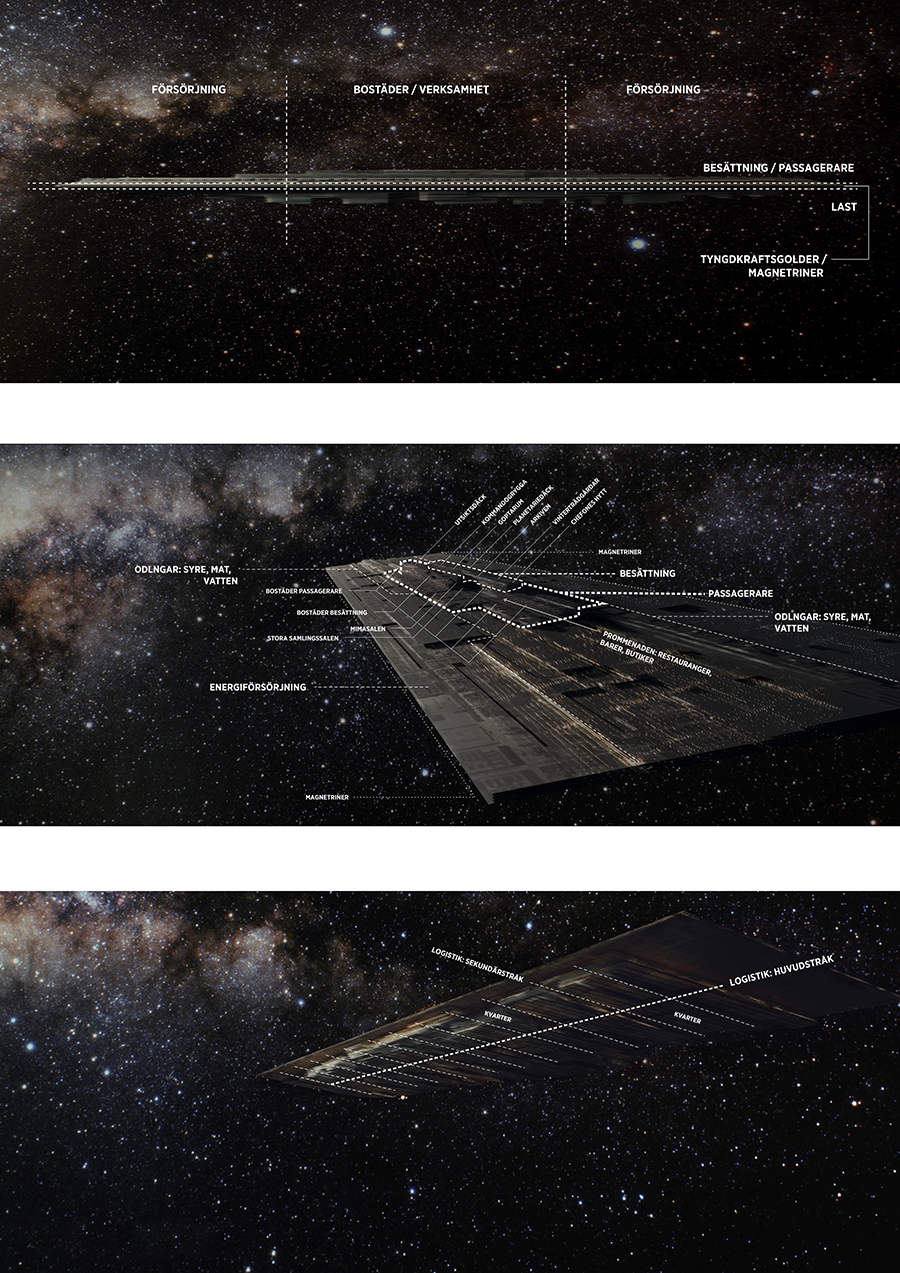
LIGHT YEARS AND LOW EARTH ORBITS
The research part of our work mostly went into trying to figure out the scale of things, what kind of technologies would make sense, and what kind of cultural expressions would seem reasonable in relation to the events of the story. Where in space would Aniara actually be if it travelled with this or that velocity? What kind of real-world objects could be tied into the story? What would people eat, what would they drink, and what kind of drugs would they take? How would they make them? Some of the work of answering these questions, and a thousand others, is shown in the diagrams presented above/below.
A diagram that maps the chapters of the poem and the sections of an early version of the script onto the solar system.
Various orbital distances between earth and the moon.
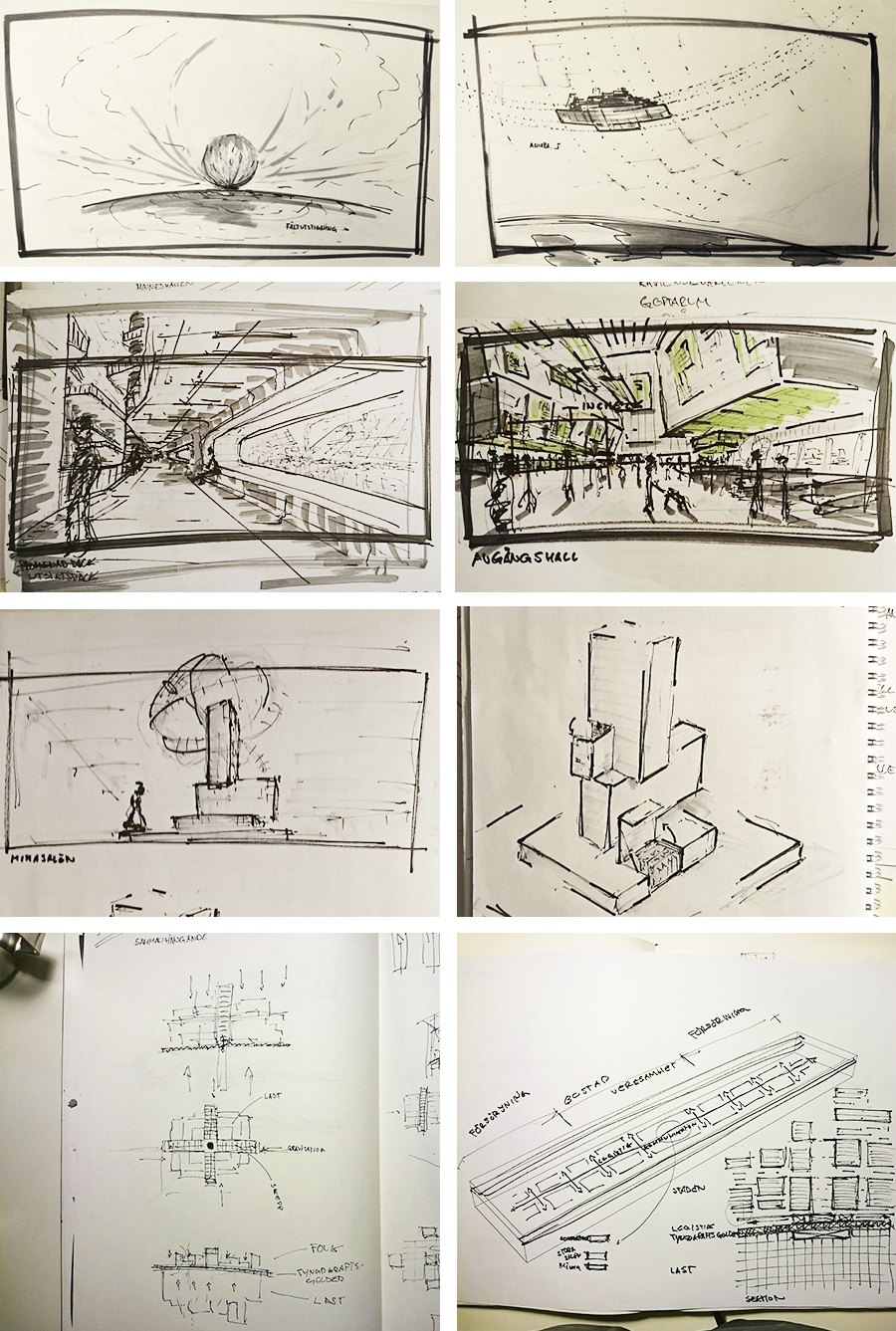
Sketches. An early concept for the take-off sequence, some interiors and sketches of different ship cross-sections; ridge, cruciform and slab.
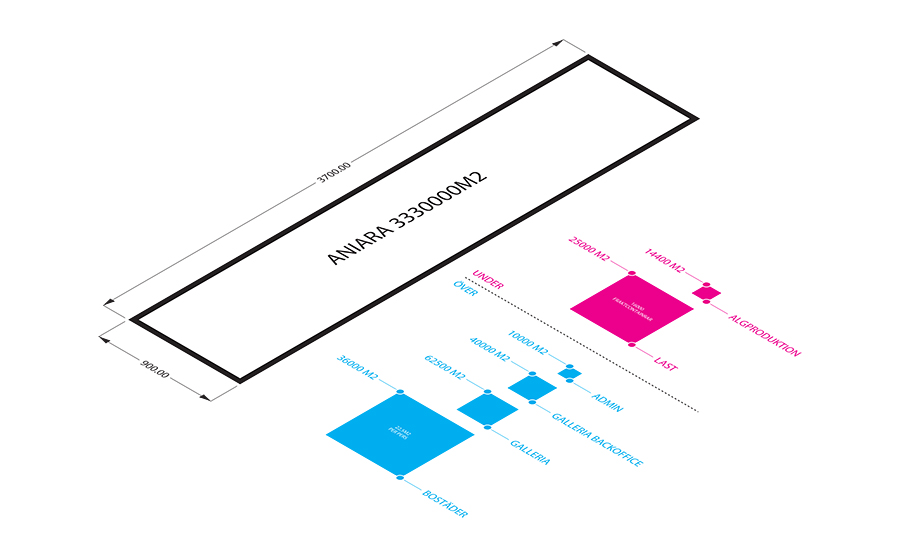
The spaces needed to house crew, passengers and cargo compared to the size of Aniara as described in the poem.

The size of Aniara compared to the tallest building on earth, Burj Khalifa.
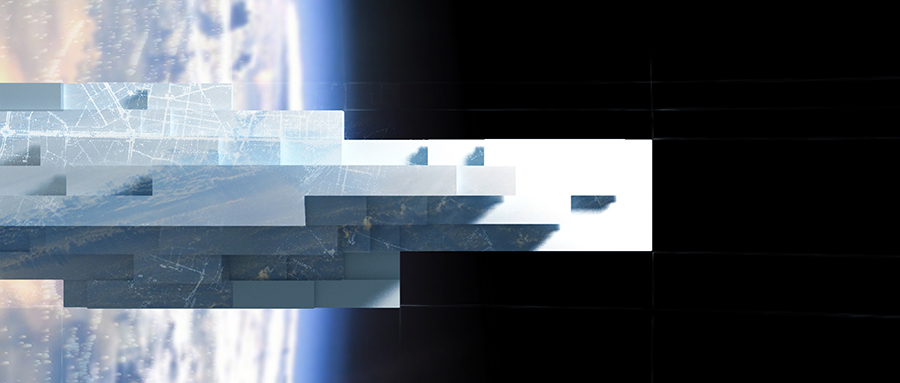
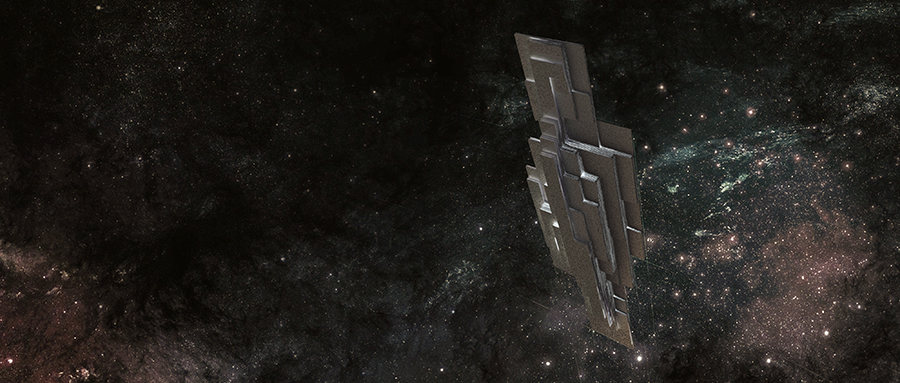

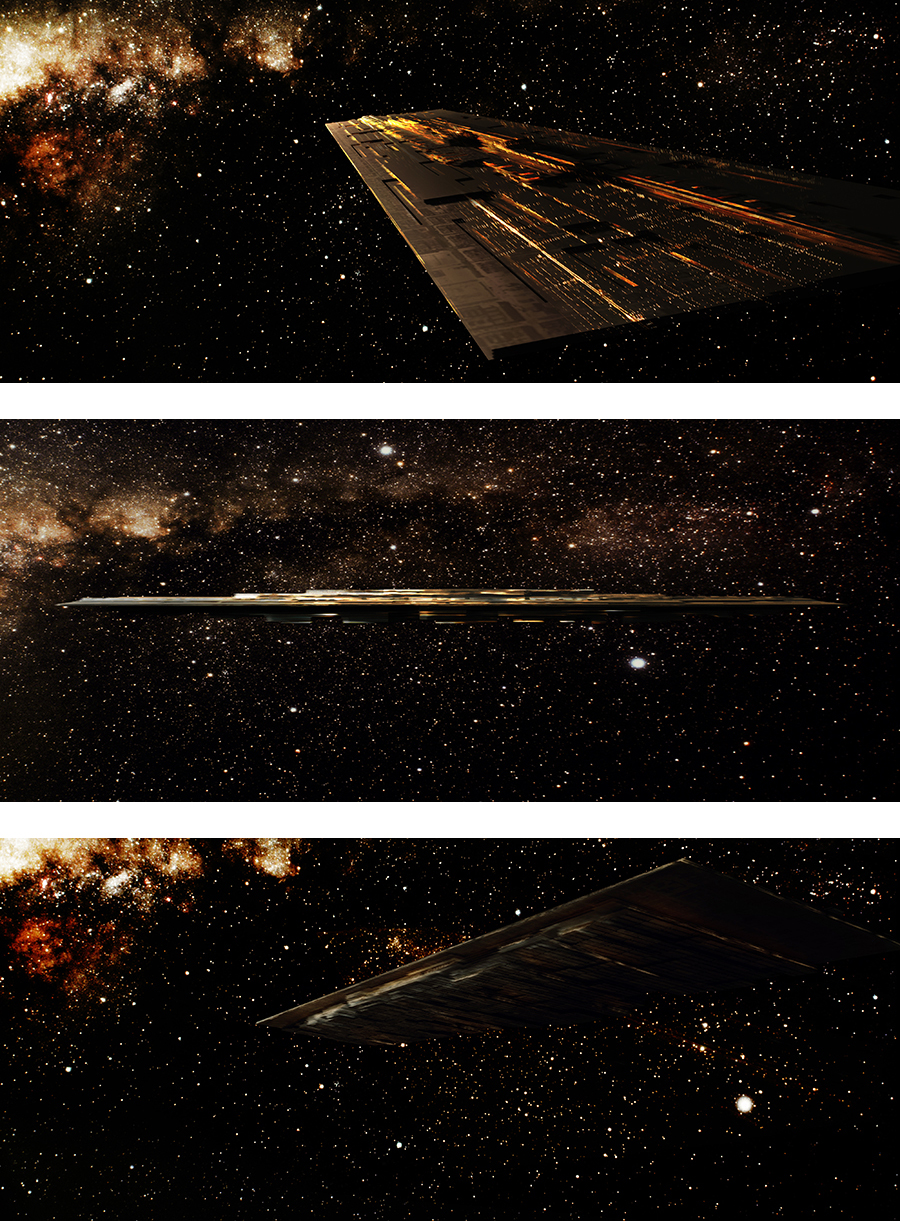

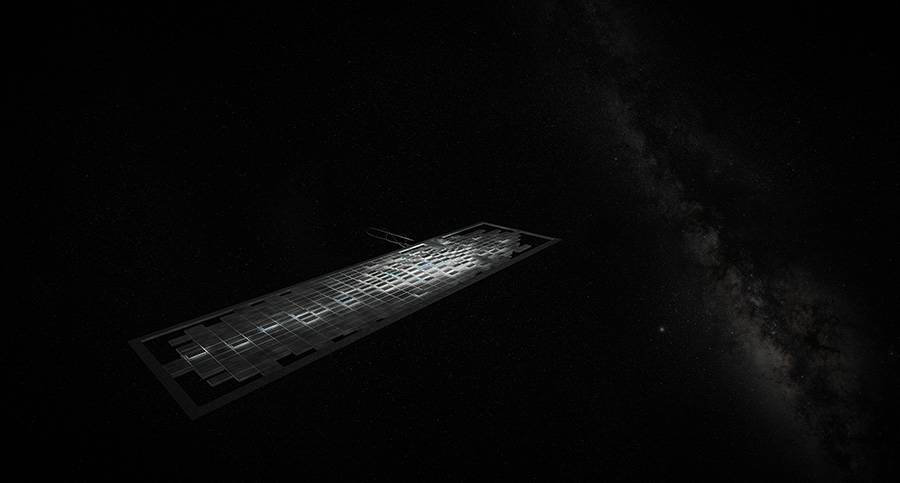
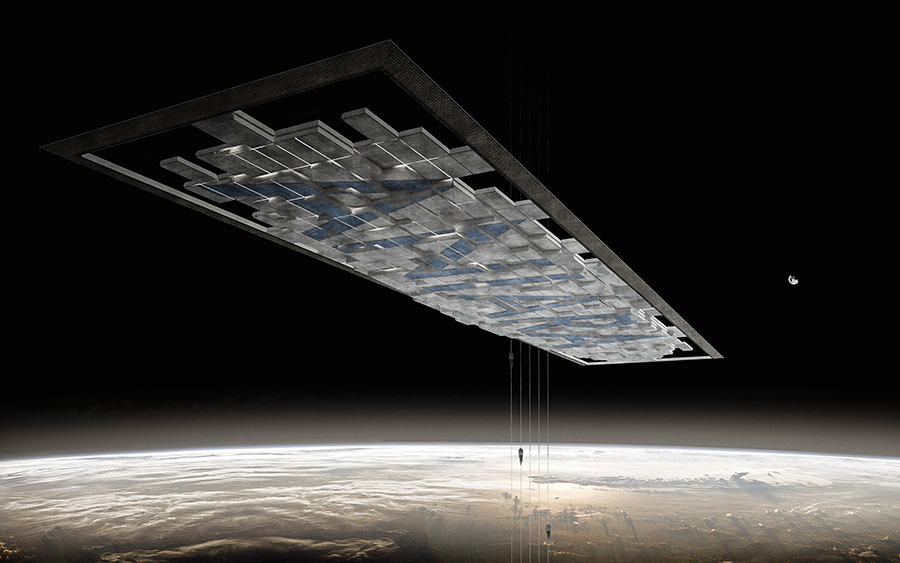
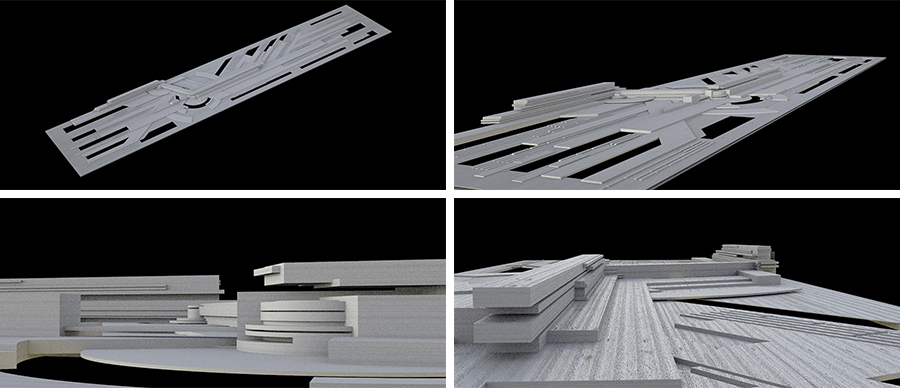
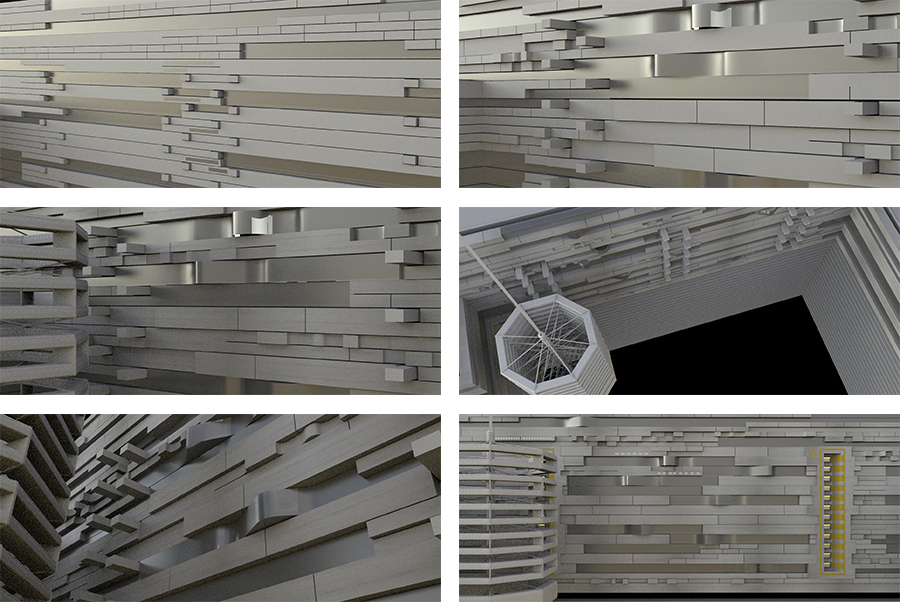
Late concept sketches for space elevator docking sequence.
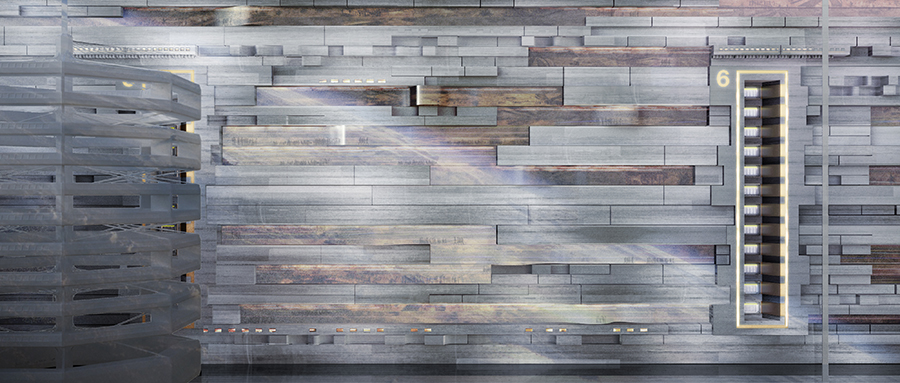
Concept visualization of Aniara's 'facade', for docking sequence.
AT THE MOVIES
The concept design was passed on along the film production chain, and by the time that the pre-production phase had begun (in summer, 2016), other disciplines within the production team, such as scenography, costume, art direction, and special effects, took over. Along with Pella, Hugo and the rest of the team they carried the concepts onward and made them into the film that’s in cinemas today.
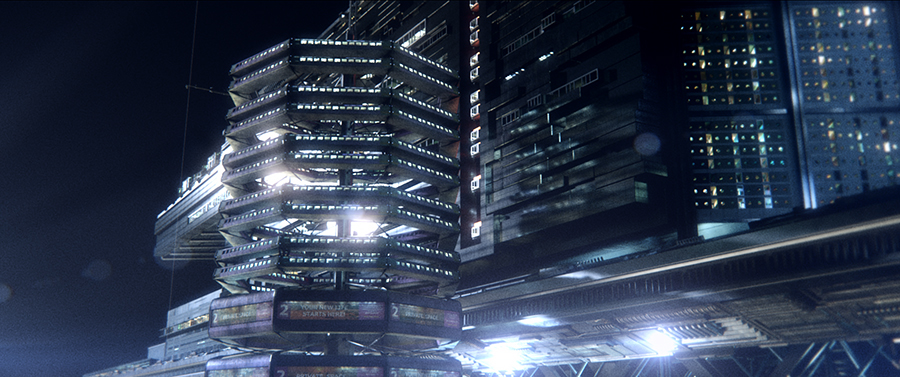
The final result. Still frame from Aniara, 2018, courtesy of SF Studios.
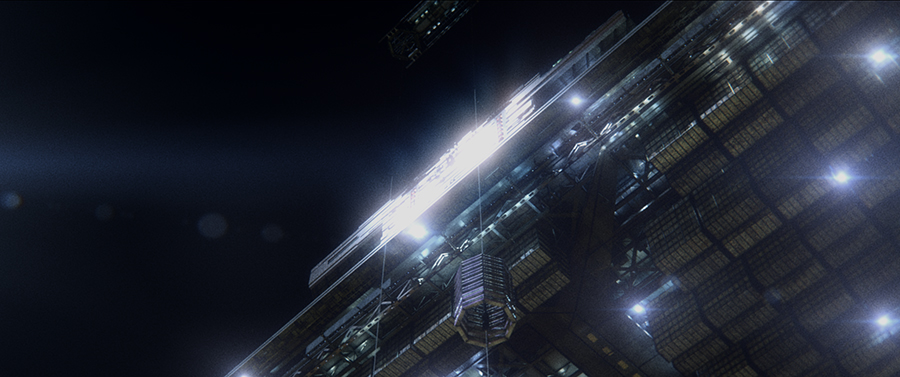
Space elevator docking sequence. Still frame from Aniara, 2018, courtesy of SF Studios.
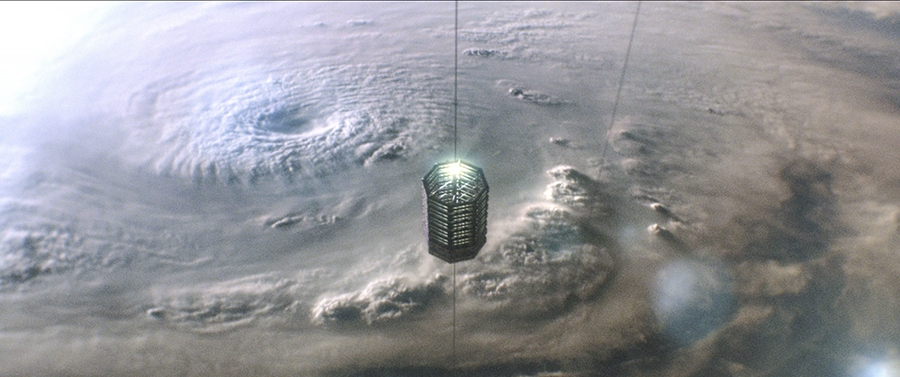
Space elevator approach. Still frame from Aniara, 2018, courtesy of SF Studios.
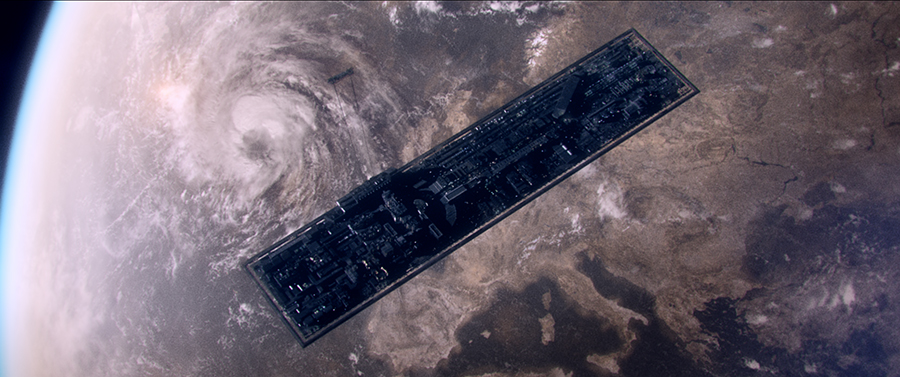
In earth orbit. Still frame from Aniara, 2018, courtesy of SF Studios.
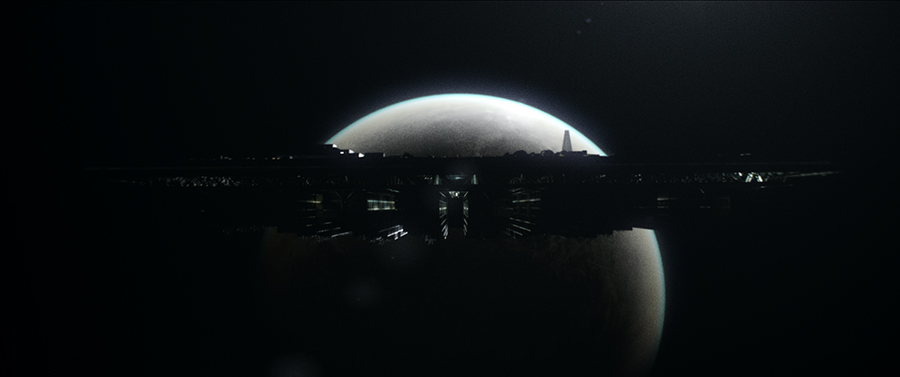
Leaving earth behind. Still frame from Aniara, 2018, courtesy of SF Studios.
